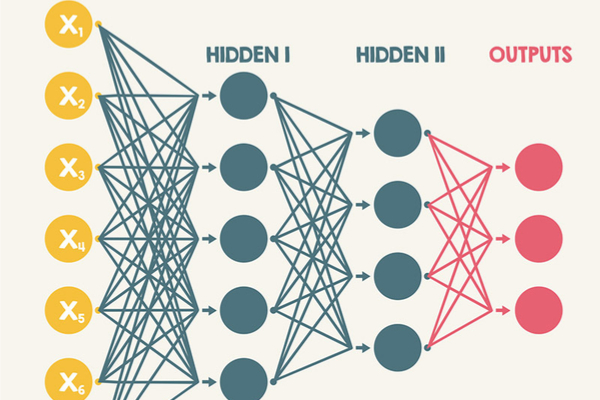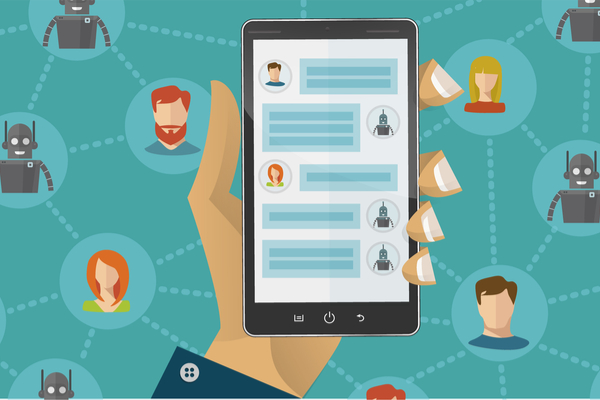Recent technological advancements are changing how customers interact, not just with brands but with each other. With digital engagement channels enabling social interactions, the world of customer experience is being reimagined. There is lesser elbow room for any missteps in delivering great experiences.
These days, customers expect quicker responses than ever before. Faster resolutions to their problems. They have grown accustomed to personal communication platforms (WhatsApp, Facebook Messenger, WeChat, etc) that are flexible, lean and proactive. Unless brands can create personalized and seamless journeys, their services would not be of much use to customers.
The clincher is that today, there are no excuses for brands to resort to archaic ways of interacting with customers. With the artificial intelligence-led advancements in areas of machine learning and deep learning, they are in an enviable position to digitally transform their service ecosystems by deploying chatbots.
While chat sessions between customers and humans were always a part of the customer service journey, they often did not exhibit the same experience as for a voice interaction. Chatbots are slowly becoming a game changer for enterprises not only to enhance their customer’s experience but also to build their own brands.
With the global smartphone penetration is expected to cross 65% in 2018, access to data and hence chatbot either on the web, mobile apps or messenger apps will become the epicentre of customer care and experience strategy that enterprises will have to device. This powered by AI driven machine and deep learning algorithm will ensure that the bots can communicate as well as we humans do.
What are chatbots?
Simply put, a chatbot is a next-generation AI-based tool that interacts with users using a chat interface. Powered by AI and natural language processing, chatbots understand user requests – whether solutions to daily problems, business-related queries or social queries – and communicate to them via web and mobile-based interfaces.

How do chatbots work?
A chatbot, like any other app, has an application layer, a database, and specific APIs to call external service. However, its user interface is replaced with a chat interface. Companies, deploying chatbots, have vast conversation logs that developers use to analyze what customers want. With a combination of machine learning models and in-built tools, each question a customer asks is matched with the best possible answer. The chatbot is then fed with thousands of conversation logs, and from these logs – it can map questions with right answers.
Major types of classification
Patterns: Used to classify text and produce a suitable response for customers. A standard structure of these patterns is “Artificial Intelligence Markup Language” (AIML). The chatbots only respond to associated patterns, they cannot go beyond it.
Algorithms: In the above, for each question - a unique pattern must be available in the database to provide a suitable answer. With lots of combination of patterns, it creates a hierarchical structure. To reduce complexity, algorithms are used to reduce the classifiers and produce a more manageable structure. This approach is known as the ‘reductionist’ approach.
Artificial Neural Networks: Neural Networks can help in calculating output - using weighted connections which are calculated from repeated iterations while training the data. Each step through the training data amends the weights - resulting in accuracy.

Natural Language Processing: Chatbot combines some of the steps given below to convert the customer’s text or speech into structured data that can be used select the related answer.
(1) Sentiment Analysis – tries to learn if the user is having a good experience or whether it should transfer to a human agent
(2) Tokenization – divides a string of words into tokens that are linguistically symbolic or differently useful for the application
(3) Named Entity Recognition – looks for keywords such as the name of the product, user name or address, whichever data is required
(4) Normalization – processes the text to find common spelling mistakes or typographical errors that misintepret user intent
(5) Dependency Parsing – searches for objects and subjects (verbs, nouns, and common phrases) in the user's text to find dependent and related phrases that users might be trying to convey
Database: The knowledge base feeds chatbots with information needed to give suitable responses to customers. With customer data captured in the database, NLP translates human language into information with a combination of patterns and texts which are mapped in real-time to find responses.

How chatbots can improve the customer journey
A customer journey map is a visual representation of every customer interaction. However, they are no longer simple to map and deliver. Customers move fluidly between channels and devices (online and offline), but they still expect personalized services. Communicating with them in the right place, at the right time, has become a challenge and an opportunity.
It is where chatbots come in.
They enable brands to create successful omni-channel customer journey. By handling increasingly complex tasks, and managing interactions that are more credibly ‘human’, they empower service representatives to take on more value-driven tasks. This results in customers having their expectations met, no matter the channel of their choice.
Steps to personalize chatbots across customer journey
- Ensure availability of high-value content – chatbots are highly intuitive, and they need information immediately so that they can search and provide useful content according to the interaction
- Address customer requirements – chatbots should be able to frequently tap into stored FAQs or access CRM initiatives with past conversations with customers
- Speak the language of the customer – a good chatbot should be able to provide cross-channel and multi-language support
- Track and segment customers – chatbots should provide personalized solutions by segmenting customers based on their profiles and behavioral patterns
Advantages of chatbot-driven customer journey
- Effective handling of repetitive customer queries that saves time for the customer, and reduces effort in providing service
- Instant personalization of interactions based on customer analytics
- Ability to handle multiple customers at one time, without human assistance
- Availability of 24/7 support service, without any restrictions on time zones or operating hours
- Valuable insights into customer purchasing behavior by using order histories and making suggestions for the next order
- Bottom-line reduction in costs and resources
In this increasingly fast-paced world, competitive differentiation is all about providing the best possible experience in every step of the customer journey. Time is certainly running out for those who remain skeptical of the business impact of using chatbots to drive these journeys. After all, it is a bot-eat-bot world. Unless brands have chatbots by their side, to guide customers through meaningful and sustainable journeys – they just may lose out to the competition.
- Categories
- Tags
- Archives
Subscribe For Updates
Get the Servion Blog updates in your inbox.











